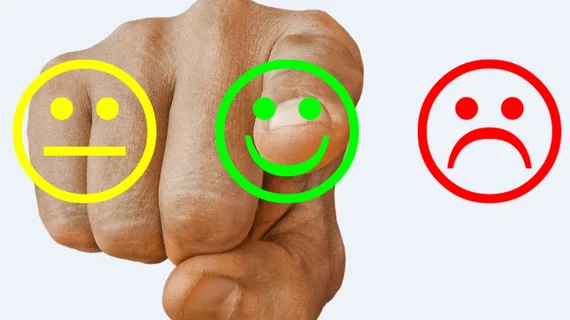Important factors that influence radiology practices’ patient experience scores
Patients who are male, face shorter imaging exam durations or on-time appointment starts are likelier to rate a radiology practice highly, according to an analysis published Saturday in JACR.
Conversely, individuals who endured longer exam or wait times after check-in were more apt to rate a provider negatively. The findings are derived from a survey of more than 3,600 patients who underwent outpatient MRI exams at an academic medical center during a 10-month period between 2021 and 2022.
Experts believe the data offer key clues as practices seek to score higher marks in value-based care models.
“The radiology community has made calls for health equity; differences in the patient's experience are important given evidence that improved experience is associated with better outcomes and adherence to treatment recommendations,” corresponding author Nelly Tan, MD, with the Mayo Clinic Arizona Department of Radiology in Phoenix, and co-authors advised. “In this study, we observed no differences in ratings by age or race; however, this is limited by the lack of statistical power to detect differences in our population.”
The post-appointment survey asked patients to rate their experience on a five-point emoji scale, with an additional space for free-text responses. Ratings of 3 or lower were categorized as negative while those of 4 or higher were deemed positive. Researchers also used natural language processing software to help categorize patient feedback.
Positive ratings had a higher proportion of male respondents (48%) when compared to negative ones (37%), the authors noted. And patients who endured longer exam times (at a median of 54 minutes vs. 44 minutes on the shorter side) and longer wait times after check-in (62 minutes vs. 46) were likelier to rate their experience negatively. Meanwhile, the most common themes to surface in free-text feedback included excellent service (84%), on-time starts (8%) and comfortable IV placement (0.4%). Long wait times (10.5%), poor communication (8%) and physical discomfort (4%) showed up the most frequently in negative surveys. White patients comprised the vast majority of respondents at 92%, making it difficult to draw conclusions about race, the authors added.
Long wait times are a common complaint in patient experience surveys. Besides shortening them, radiology providers also can try other patient-centered changes in their waiting areas to improve patient perceptions, Tan et al. advised. Those can include offering ample reading materials, multiple large televisions, free Wi-Fi, regular progress updates, blankets, or beverages. A previous analysis in JACR found that such changes can lead to patients underestimating the perceived duration of their wait time by up to 30 minutes.
AI also will help to alleviate some of these issues, be it through allowing for faster MRI acquisition times or assisting patients with interpreting their radiology reports. The technology aided the investigators in interpreting the survey results, allowing them to “parse thousands of free-text feedbacks in a few seconds without any human intervention.” They’re already eyeing other ways to use natural language processing in this domain.
“Currently, we are training the model to assign appropriate clinical teams to address patient feedback and predict the practice’s response to patient issues,” Tan and co-authors noted. “A natural next step is to determine if machine learning models can proactively predict patient experience and identify opportunities to improve patient experience by incorporating real-time data that considers patient factors, exam factors, systems factors, human resource capacity, and operations.
Read much more about the results, including potential limitations, in the Journal of the American College of Radiology below.

